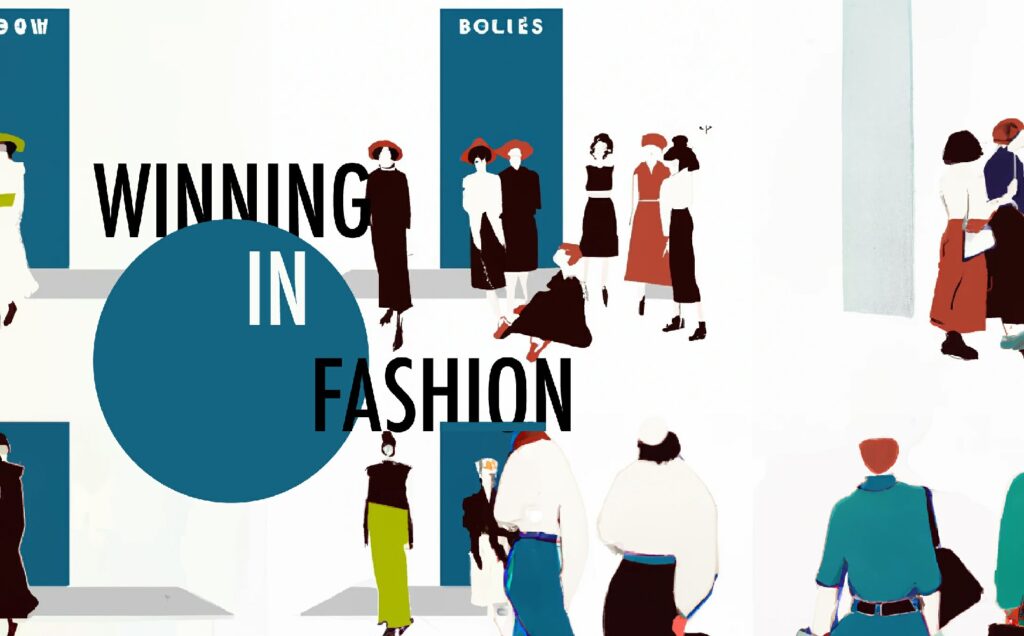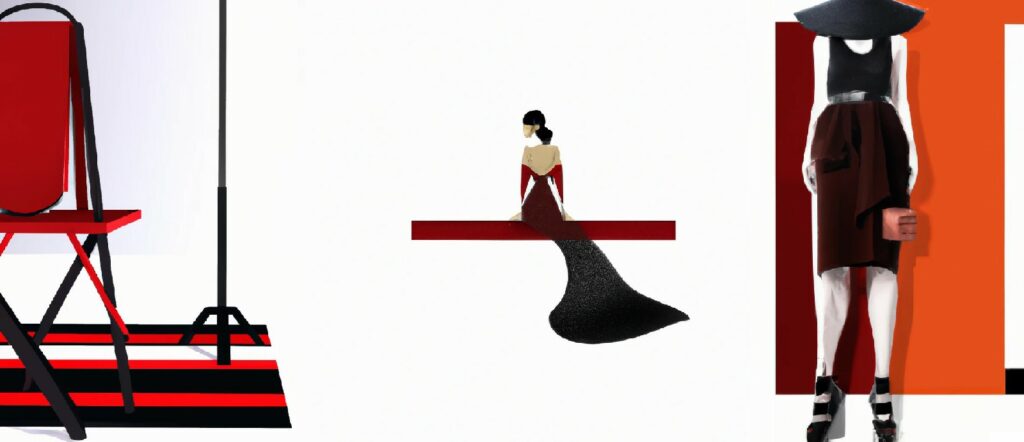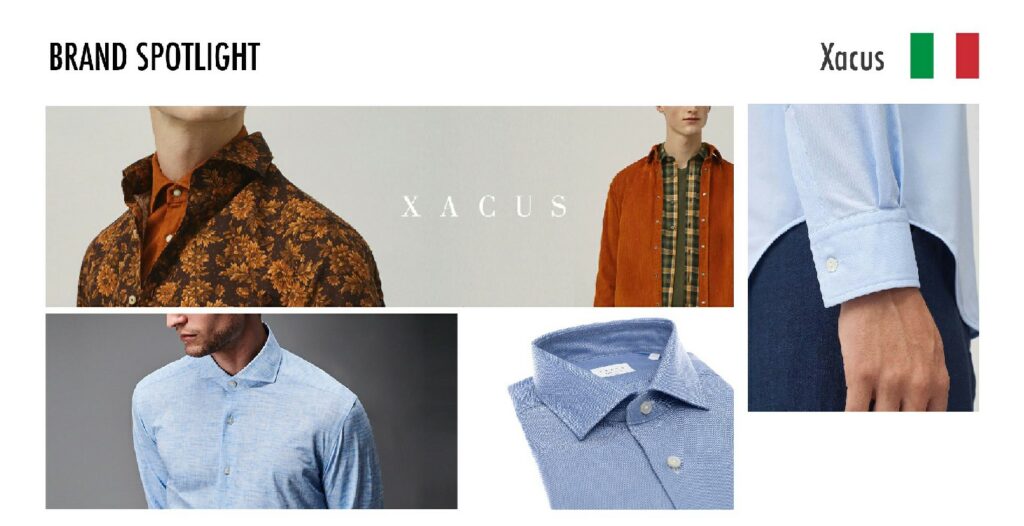Marketing for Apparel Brands: Ahead of the game
In the vibrant tapestry of the global economy, few sectors radiate as much color and dynamism as the apparel industry. A testament to human creativity and the desire for self-expression, the industry serves as a canvas where art and commerce elegantly intertwine. Historically, the apparel market’s evolution mirrors broader economic and cultural shifts that have defined our world. From the transformations of the Industrial Revolution to the waves of globalization and digitization, this industry has journeyed through remarkable periods of change. In the following piece we decode successful marketing for apparel brands in its strategies, tactics and study cases
The Modern Apparel Market: A Multibillion-Dollar Behemoth
Today, the global apparel market stands as a multi-billion dollar behemoth. Valued at a staggering $1.5 trillion in 2021, it’s projected to reach $2.25 trillion by 2025, boasting a robust Compound Annual Growth Rate (CAGR) of around 4.2%. However, the industry’s landscape is far from uniform, showing clear distinctions across geographies and demographics. Fast fashion reigns in Asian markets, propelled by a burgeoning middle class, while Western markets are witnessing a rise in demand for sustainable and ethically-produced attire.
E-Commerce and Apparel: A New Era of Fashion
The advent of e-commerce has revolutionized the traditional retail model, becoming the preferred shopping method for many consumers. With broader reach and personalized shopping experiences, digital platforms have served as the industry’s lifeline amidst disruptions like the COVID-19 pandemic. Yet, the rise of online shopping brings its challenges. Amid crowded digital marketplaces, brands need to innovate, tell compelling stories, and connect with customers on a deeper level to succeed. As the apparel market continues to evolve, understanding its complexities is paramount, whether for an established fashion powerhouse or a burgeoning “apparel lifestyle brand.”
Apparel Industry Trends
The world of clothing and attire is a realm of constant reinvention, seamlessly threading together innovation, culture, and consumer desire. Trends come and go, sometimes fading into obscurity, sometimes permanently transforming the landscape. Below, we delve into the current major and micro trends impacting the industry, a window into the future of this dynamic market.
Sustainability: A Fashion Statement
In the wake of increasing environmental consciousness, sustainability has ceased to be an optional extra – it’s now a compelling fashion statement. More consumers are demanding eco-friendly clothing, pushing brands to reconsider their production processes, material sourcing, and waste management. Brands like Patagonia, with its pledge to repair, reuse, and recycle, exemplify this trend, proving that sustainability and profitability can, indeed, coexist.
Technological Innovation: The Future is Now
Technology is weaving itself into the fabric of the apparel industry, revolutionizing how brands design, manufacture, and market their products. From 3D printing and AI-driven design processes to virtual reality fitting rooms, the future is now for fashion innovators. Brands like Uniqlo, with their AIRism technology, show how tech can enhance clothing’s functionality and the customer’s experience.
Direct-to-Consumer: A Personalized Touch
Bypassing intermediaries and reaching out directly to consumers, many apparel brands are now opting for a Direct-to-Consumer (DTC) approach. This trend allows for a more personalized consumer experience, giving brands more control over their messaging and service quality. Digitally-native brands such as Warby Parker and Everlane have mastered this model, creating streamlined, engaging, and customer-focused shopping experiences.
Inclusivity: Fashion for All
Inclusivity has emerged as a powerful trend in recent years, championing diversity in size, gender, age, and ethnicity within the industry. Brands are now recognizing that fashion is for all, resulting in more diverse representations in ad campaigns and a broader range of product sizes. Companies like Universal Standard are leading the inclusivity charge, offering an unprecedented range of sizes and championing the message that fashion should be a universal right.
Local Production: The Appeal of Made in…
Amidst globalization, there’s been a resurgence of the ‘Made in…’ trend. Whether it’s ‘Made in the USA’ or ‘Made in Italy’, consumers are increasingly valuing locally-made clothing, associating it with quality, ethical production, and support for local industries. The Italian shirt manufacturer Xacus is a shining example, crafting high-quality shirts since 1956 and proudly promoting its Venetian heritage.
These trends are more than fleeting fascinations. They are a testament to the apparel industry’s resilience, adaptability, and its ability to fashion a future that resonates with evolving consumer values and technological advancements. For an “apparel lifestyle brand”, or any brand aiming to succeed in this dynamic industry, keeping a finger on the pulse of these trends is an absolute necessity.
Curious Facts About the Apparel Industry
The world of apparel is full of surprises, with fascinating tales woven into the fabric of its history and daily operations. As we delve deeper into the dynamic arena of clothing and fashion, let’s uncover some intriguing facts that add a touch of intrigue to this industry’s colorful narrative.
Blue Jeans: The Epitome of Durability
Denim jeans, the ubiquitous wardrobe staple, have a history as durable as the fabric itself. Originally designed for miners during the California Gold Rush in the 1870s, jeans were crafted to withstand tough conditions. Fast forward to the present day, jeans are worn worldwide, a testament to their enduring appeal and versatility. Now a key piece in the ‘casual attire’ domain, they have come a long way from their workwear origins.
The Impact of the World Wars on Women’s Clothing
The World Wars had a profound impact on society, including the realm of women’s clothing. With men away at war and women stepping into traditionally male jobs, practicality became a priority. Skirts shortened, and women started wearing pants, a radical shift from the prevailing norms of the day. It was a turning point that marked the beginning of significant changes in women’s fashion, paving the way for the diverse ‘female wear’ options we see today.
The Environmental Cost of Fast Fashion
Fast fashion, known for its quick turnover and affordable prices, has a less visible but significant cost – its environmental impact. It is estimated that the fashion industry produces 10% of global carbon emissions and is the second-largest consumer of the world’s water supply. A single cotton t-shirt requires approximately 2,700 liters of water to make – that’s enough for one person to drink for around 900 days. This fact underscores the importance of sustainable practices in the ‘ready-to-wear’ industry.
The Mirror of Identity: Clothing as Self-Expression
We dress not merely to cover our bodies, but to convey who we are, who we aspire to be, and how we want to be perceived. Clothing is a mirror of our identity, a personal language that communicates our distinct story to the world. Let’s delve deeper into this nuanced intersection of fashion, self-expression, and society.
Stitching the Self: The Psychology of Clothing
The clothes we wear can significantly influence our mood, confidence, and self-perception. Clothing can serve as a form of self-affirmation, empowering us to embody our ideal selves. For instance, wearing a power suit to a business meeting may bolster confidence and establish an aura of professionalism and competence. Similarly, choosing comfortable leisurewear during downtime can foster a sense of relaxation and wellbeing.
Fabric of Society: Clothing and Social Identity
Beyond individual identity, clothing also plays a crucial role in expressing social identity. We often use fashion as a tool to signal our affiliations to certain groups, be it a particular subculture, profession, or social class. This aspect of clothing underscores its role in fostering a sense of belonging and camaraderie among like-minded individuals.
Style Narratives: Clothing as a Conversation Starter
Our clothing choices can also initiate conversations and generate connections with others. A unique piece of attire can spark interest and invite questions, opening up avenues for shared experiences and storytelling. In this way, clothing becomes a medium of communication, enabling us to express our personal narratives and connect with others on a deeper level.
Fashion Activism: Clothing as a Political Statement
In the age of conscious consumerism, our sartorial choices are increasingly seen as a means of political expression. By supporting sustainable clothing brands or wearing clothes that align with social causes we care about, we make a statement about our values and contribute to the change we want to see in the world.
Understanding the complex emotional and sociological reasons behind our clothing choices can provide invaluable insights for brands crafting ideas of marketing for apparel brands. By recognizing and honoring the profound role of clothing in self-expression, brands can resonate more deeply with consumers and create offerings that truly reflect their customers’ identities and values.
Decoding Brand Personas:
An individual’s choice of apparel brand often speaks volumes about their personality, preferences, and lifestyle. Let’s examine five distinct personas, each associated with a different apparel brand, to gain insights into what these consumers may want to signal through their sartorial choices.
1. “Patagonia Pathfinder” Pete
Pete, the Patagonia Pathfinder, is passionate about outdoor adventures and protecting the environment. He chooses Patagonia because of its high-quality, durable apparel designed for his active lifestyle. Pete also values Patagonia’s commitment to sustainability and corporate responsibility, seeing his choice as a reflection of his own environmental ethos.
2. “Chanel Chic” Charlotte
Charlotte, the Chanel Chic, embraces sophistication and elegance. She chooses Chanel as a symbol of timeless fashion and high societal status. The brand’s iconic designs and its storied history in haute couture resonate with her desire for exclusivity and luxury.
3. “Quicksilver Wave-rider” Quinn
Quinn, the Quicksilver Wave-rider, is an enthusiast of surf culture and loves to ride the waves. Quicksilver’s range of surfwear and casual clothing aligns perfectly with his active, beach-loving lifestyle. For Quinn, the brand embodies his free spirit and passion for the ocean.
4. “COS Contemporary” Clara
Clara, the COS Contemporary, is a minimalist at heart who appreciates modern, functional design. She chooses COS for its commitment to contemporary, timeless aesthetics and quality. Clara sees her COS wardrobe as an expression of her refined taste and love for understated elegance.
5. “Off-White Innovator” Oliver
Oliver, the Off-White Innovator, is a fashion-forward individual who likes to push boundaries. He chooses Off-White for its bold, innovative designs that mix high fashion with streetwear. Oliver uses the brand to signal his edgy, avant-garde style and his finger-on-the-pulse knowledge of current fashion trends.
As these brand personas illustrate, the brands we choose can serve as powerful signals of our identity and lifestyle. For apparel brands, understanding these signals is key to crafting marketing for apparel brands and fashion houses that resonate with their target audiences.
Innovative Brands Leading the Charge
The world of apparel is a dynamic landscape, shaped by constant evolution and driven by brands that dare to innovate. Let’s delve into the unique propositions of five such brands that are pushing the boundaries and redefining the industry standards.
1. Xacus: Tailoring Italian Excellence
Xacus, an Italian shirt manufacturer, stands out for its timeless elegance, meticulous attention to detail, and high-quality craftsmanship. Its dedication to sartorial excellence is manifested in every stitch, with a commitment to traditional Italian tailoring techniques. Xacus leverages its rich heritage to offer a unique blend of classic design and contemporary flair, successfully carving a niche in the crowded apparel market.
2. Everlane: Transparency Takes the Lead
Everlane is known for its radical transparency. The brand shares the real cost behind all its products, from materials to labor to transportation, then reveals its markup. In doing so, Everlane not only presents stylish, high-quality clothing but also invites consumers into a broader conversation about the industry’s impact and ethical practice.
3. Balmain: Embodying French Luxury
Balmain has long been a paragon of French luxury, with its rich history and iconic designs. The brand’s commitment to innovation is reflected in its unique blend of traditional French design principles and contemporary global influences. Balmain’s distinct style, quality, and sense of luxury have made it a standout choice in the luxury fashion market.
4. Reformation: Fashion with a Conscience
Reformation is a trailblazer in sustainable fashion, proving that style and eco-consciousness can coexist beautifully. The brand is committed to minimizing its environmental footprint, utilizing sustainable fabrics, and sharing its sustainability journey with consumers, helping to redefine what responsible fashion looks like.
5. Supreme: The Streetwear Phenomenon
Supreme, born in the streets of New York, has revolutionized the concept of streetwear. The brand’s limited-edition collections and collaborations, combined with its unique marketing approach, have cultivated a loyal following and turned Supreme into a cultural phenomenon. Supreme’s innovation lies in its ability to consistently capture the pulse of youth culture and translate it into coveted apparel pieces.
These innovative brands demonstrate the potential for distinct and diverse strategies in the apparel market. They challenge the status quo, drive consumer expectations, and shape industry trends, offering valuable insights for other players seeking to carve out their own path.
Successful Marketing for Apparel Brands
In the competitive landscape of the fashion industry, apparel brands are perpetually seeking unique marketing strategies to differentiate themselves. These strategies not only need to captivate consumers, but also resonate with their values, expectations, and lifestyle. The following strategies have helped apparel brands stand out and create a lasting bond with their audience.
1. Storytelling: Building an Emotional Connection
The power of a compelling narrative cannot be underestimated in the world of apparel marketing. A brand story that resonates with consumers can spark an emotional connection that transcends mere transactions. Everlane provides a prime example with its “radical transparency” ethos. By offering a detailed breakdown of the costs behind its products and championing ethical business practices, Everlane strikes a chord with consumers who value integrity and honesty. This narrative forms the backbone of Everlane’s marketing, casting it as an apparel brand that values fairness and responsibility.
2. Influencer Partnerships: Leveraging Popular Appeal
Influencer marketing, when executed properly, can amplify a brand’s reach and augment its appeal. Apparel brands can capitalize on the followings of popular individuals to elevate their visibility and appeal. French luxury house, Balmain, showcases this strategy perfectly by partnering with mega-celebrities like Rihanna and Kim Kardashian. By associating with these influential figures, Balmain taps into their extensive fan bases, thereby expanding its reach to a younger, trend-conscious demographic.
3. Sustainability: Responding to Conscious Consumerism
As modern consumers become increasingly concerned about the environmental impact of their purchases, sustainability has evolved from a luxury to a necessity in apparel marketing. Brands that champion sustainability differentiate themselves and resonate with eco-conscious buyers. Reformation is a stellar example, using eco-friendly materials and sustainable production processes. Their marketing emphasizes this commitment, appealing to consumers who prioritize environmental stewardship.
4. Limited Editions and Capsule Collections: Harnessing the Power of Scarcity
Apparel brands have long recognized that scarcity can breed desire. Limited editions and capsule collections create a sense of urgency that can trigger impulse purchases and enhance brand exclusivity. Supreme has mastered this strategy, releasing limited-edition collections that create a frenzy among fans. By deliberately restricting supply, Supreme builds hype, drives demand, and cultivates a sense of exclusivity.
5. Hype Creation: Crafting Anticipation and Excitement
Creating anticipation or ‘hype‘ around product launches can be a potent marketing tool. This strategy works on the psychological principle of the ‘Fear of Missing Out’ (FOMO), compelling consumers to buy before they miss the opportunity. Sneaker brands, like Nike and Adidas, frequently employ this strategy, releasing snippets of information about upcoming launches to generate buzz and anticipation. The result is often long queues, online rush, and instant sell-outs, enhancing the brand’s appeal and market presence.
6. Customer-Centric Approach: Nurturing Loyalty through Understanding
Apparel brands that prioritize understanding their customers’ needs, motivations, and preferences often foster deeper loyalty. Italian shirt manufacturer, Xacus, offers a personalized shopping experience and exceptional customer service, ensuring each interaction reflects its understanding of its customers. By placing the customer at the heart of its marketing strategy, Xacus cultivates long-term relationships and enhances brand loyalty.
7. Collaborations: Merging Worlds for Unique Appeal
In a bid to create unique products that combine the strengths of different brands, many apparel brands have embraced collaborations. These partnerships often lead to products that capture the unique characteristics of both brands, offering something new and exciting to consumers. The collaboration between Nike and fashion label Off-White is a prime example. Their joint creations have not only been trendsetters but have also generated substantial hype. Another notable example is the collaboration between luxury brand Louis Vuitton and streetwear label Supreme. The result was a unique blend of high fashion and street style, which was highly appreciated by fans of both brands. These collaborations illustrate the power of synergies in creating memorable apparel and enhancing brand appeal.
In conclusion, the most successful marketing for apparel brands strategies for apparel brands share a common thread: they deeply resonate with their target audience. Whether it’s through emotional storytelling, influential partnerships, sustainable practices, hype creation, or customer-centric approaches, these strategies facilitate a deeper connection between the brand and its consumers. By continually understanding and evolving with their audience, successful apparel brands ensure their marketing strategies remain effective and impactful.
Ikono x your fashion brand
As the apparel industry continues to evolve, branding agencies play a pivotal role in helping fashion brands establish a distinct identity and connect with their target audience. Among these agencies, Ikono stands out as the go-to partner for both emerging and established fashion brands. What sets Ikono apart is its unique sociology-based approach to branding. By deeply understanding the societal and cultural factors that influence consumer behavior, Ikono crafts strategies that resonate on a profound level. Their expertise in decoding human psychology, combined with their creative prowess, enables them to create authentic and compelling brand narratives. With Ikono as their trusted partner, fashion brands can confidently navigate the ever-changing landscape, stand out from the competition, and build lasting connections with their customers.









